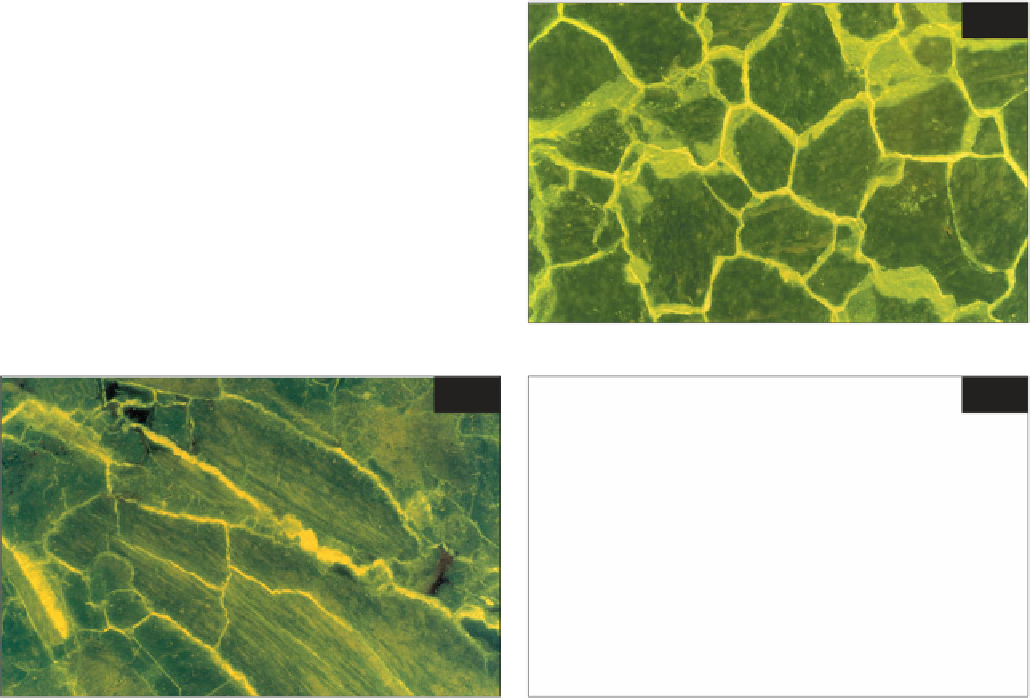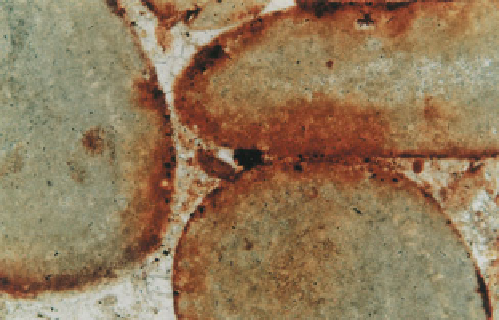Geoscience Reference
In-Depth Information
microstructure of the marble. Marble with xenoblastic
texture seems to to be less prone to bowing than marble
with a granoblastic texture. Xenoblastic marble has
irregular grain boundaries that interlock with each other.
Granoblastic marble has crystals that are almost an equal
width in all directions. The grains are typically polygonal
with almost straight boundaries that often meet at triple
points. The microtexture of marble can be readily studied
using the polarizing microscope. The definition of the
crystal boundaries can be enhanced by using fluorescence
microscopy or, alternatively, by etching (Alm
et al
., 2005).
Figure
94
shows a marble with granoblastic texture from
a cladding panel that was suffering from bowing and
exhibited a deflection of 15 mm.
Fire damage is a cause of stone decay that can be
assessed petrographically to determine the heating
history and depths of damage (Ingham, 2007). The
changes caused by heating of natural stone include
spalling, cracking (
95
), discolouration, nonreversible
expansion, and calcination. Red discolouration caused
by oxidation of iron compounds commences at around
300°C (
96
). Importantly, this corresponds with the onset
of significant strength loss and it can be used to detect
the depth of the 300°C thermal contour through the stone
section. Care must be taken to ensure that the pink/red
colour is attributable to heating, as some stones are
naturally pink or red. In addition, some types of natural
stone product are deliberately heat-treated by the stone
94
94
Close view of a marble from a bowing cladding
panel using fluorescence microscopy, showing
granoblastic texture with calcite crystals appearing
dark green and intercrystalline space shown as light
green; UV, ×150.
95
96
95
Microcracking of limestone caused by heating near
to the surface of fire-damaged masonry block; UV,
×150.
96
Red discolouration of limestone from a fire-
damaged masonry block; PPT, ×150.





